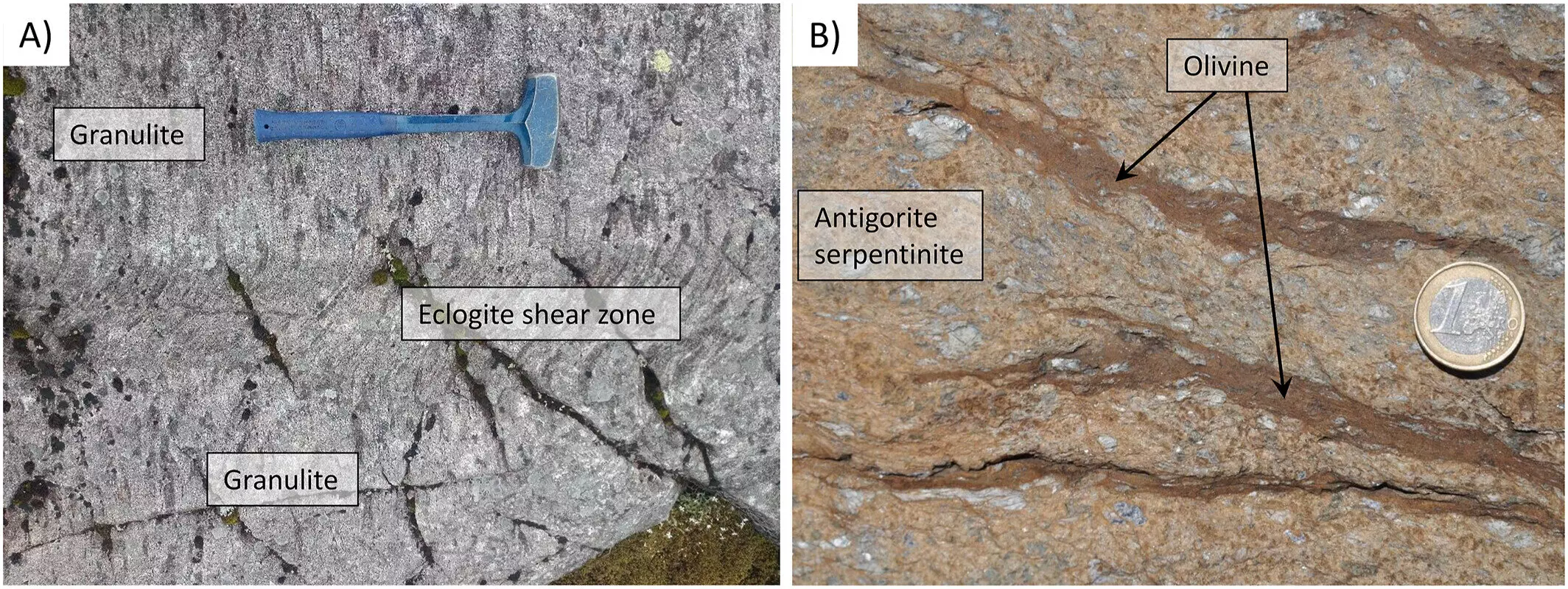Deep within the Earth’s crust, an intricate system of hydration and dehydration processes continually shapes geological structures and influences seismic activity. This essential water cycle operates under extreme conditions, where rocks alternately absorb and release water. Such dynamics not only affect the structural integrity of these rocks but can also initiate earthquakes and influence vast geological processes over millions of years. The research conducted by Schmalholz and colleagues takes a closer look at how water can migrate through what are deemed impermeable rocks, situations often observed in mantle wedges and deeper lithospheric layers.
Central to this investigation is the concept of temporary porosity—a state in which otherwise impermeable rocks can become permeable through specific chemical reactions. By applying high-pressure mathematical models, the researchers set out to quantify how the porosity of rocks evolves as hydration and dehydration cycles transpire. Their groundbreaking equations offer new insights into this water cycle’s mechanisms, presenting a critical advancement for understanding plate tectonics and continental movement.
Interestingly, earlier studies indicated that at elevated temperatures, mineral interactions could create denser structures, essentially squeezing water out and leading to the formation of rocks with increased porosity. This process generates a “dehydration front,” an advancing boundary marking the transition from hydrated to dehydrated materials. Conversely, certain rock reactions appear to facilitate the absorption of water, leading to a “hydration front” where these materials draw moisture from their surroundings, culminating in denser rock formations.
The research team conducted one-dimensional simulations that illustrate the behavior of rocks in three distinct scenarios—one focused on a hydration front, and two others exploring various dehydration fronts. For the hydration front, water enters the rock from an external source, driving the movement of moisture toward the rock core persistently. In contrast, dehydration reactions present two distinct pathways: one where water exits the rock into the surrounding space and another where water is expelled from minerals, but new water seeps in to fill the void, illustrating a complex interaction between expulsion and absorption.
Importantly, the direction in which water is displaced could influence other nearby impermeable rocks, highlighting the broader implications of these mechanisms on geological developments. The researchers emphasize that while conveying the movement of water in the Earth’s depths poses significant challenges, their newly derived equations lay the groundwork for future studies exploring the dynamic interactions that drive geological processes beneath our feet.
This research not only enhances our understanding of deep Earth processes but also underscores the complexities that water introduces to geological phenomena. As scientists continue to unravel the secrets held within Earth’s crust, this work stands as a pivotal contribution, paving the way for further exploration into the connection between hydration processes and the broader geological framework. The balance between water’s capacity to create temporary porosity in rocks has far-reaching implications for understanding earthquake phenomena, plate tectonics, and the evolution of the Earth’s geological landscape.

